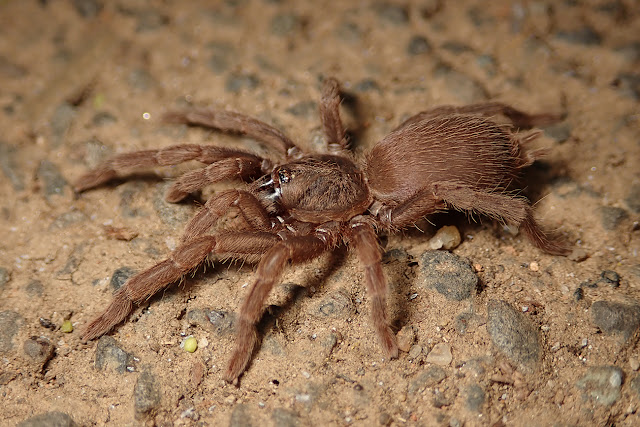Eastern Crowned Warbler
Pale-legged Leaf Warbler
Brown Shrike
Orange-headed Thrush
My second day was an improvement, I didn't stay long, but two juvenile Siberian Blue Robins totally made my day. They showed well along with the Orange-headed Thrush, which actually chased the pair around, obviously didn't want them in it's territory. Other birds I didn't care to photograph much were a Grey-streaked Flycatcher that stayed high up and an Asian Brown Flycatcher.
Siberian Blue Robin - juvenile
Orange-headed Thrush
My third day started with a Yellow-rumped Flycatcher, but it didn't make it easy for me to photograph, it stayed high up in a Banyan Tree, occasionally flying out but remained in quite dense cover. But I guess a few good views were better than none!
Yellow-rumped Flycatcher - female
Arctic Warblers were everywhere, a few newly arrived individuals were not shy and foraged on low branches, allowing plenty of photography opportunities, although they are common, not everyday you get to see them this up close! It is still remarkable to me how such a small area within an urban area can support this much migrating birds! This migrant magnet had surprised us year after year, and I am sure it will continue to bring us more good birds.
Arctic Warbler
As Typhoon Mangkhut approaches South China Sea, this super typhoon is supposed to be the strongest typhoon in the region this year. It is sometimes said that animals are more active before bad weather, as they have to take in as much energy as possible, whether this is true I am not sure but it certainly felt this way on Friday evening, as we decided to head to Shek Kong Catchment for a night walk. Brown Wood Owls were calling from up the slope, I took that as a good sign. Hoiling spotted a White-lipped Pit Viper, also sometimes known as Bamboo Pit Viper. It was feeding on a Chinese Gecko when we found it, the poor Gecko still had it's head sticking out of it's mouth, as if trying to crawl out using it's last breath...
White-lipped Pit Viper - wonder what the gecko was thinking at this point...
I also spotted a Common Wolf Snake, a species I've seen dead so many times, I am so glad to finally find one alive! It was a fairly young snake, and no longer than 30cm. Hoiling also very nearly stepped onto a Many-banded Krait! I think her shoes brushed it...I am glad she didn't actually step on it, as they are highly venomous...it curled up shortly for a photo before slithering off down the slope.
Common Wolf Snake
Many-banded Krait
There were plenty of common amphibian species around, Asiatic Painted Frogs and Brown Tree Frogs were often seen along the road, our best amphibian species was most definitely a Spotted Narrow-mouthed Frog, an absolutely adorable little ground dwelling frog.
Asiatic Painted Frog
Brown Tree Frog
Spotted Narrow-mouthed Frog
We didn't spot any large mammals, but we were rewarded with prolonged views of a pair of Indochinese Forest Rats foraging, one of which just stood there without moving for so long before running up the tree trunk and disappeared.
Indochinese Forest Rat
A Nanhaipotamon hongkongense was found along the road, these colourful forest crabs can wander quite far away from water, they are also endemic to Hong Kong.
Nanhaipotamon hongkongense
Plenty of interesting spiders were found throughout the night, the small but colourful Tetragnatha squamata, a Paraplectana sp. that resembles a ladybird, and the finally a Tarantula right in the middle of the road! Don't be fooled by the photo, it was actually really small...but it was still very exciting to finally see a Phlogiellus sp. in Hong Kong, I am not sure whether this is P. xinping that is endemic to Hong Kong, or P. bogadeki which is recently suggested also present in Hong Kong, they are nearly impossible to identify in the field.
Tetragnatha squamata
Paraplectana sp.
Phlogiellus sp.
Finally, a Collared Scops Owl was found perched on a tree by the road side, it stayed very still for everyone to get a good look for as long as we wanted! It finally flew off after a minute or two. Couldn't have asked for a better way to end the night!
Collared Scops Owl - a very calm individual



























Beautiful variety of stuff there, Matt !
ReplyDeleteThe owl looks upset.
ReplyDelete